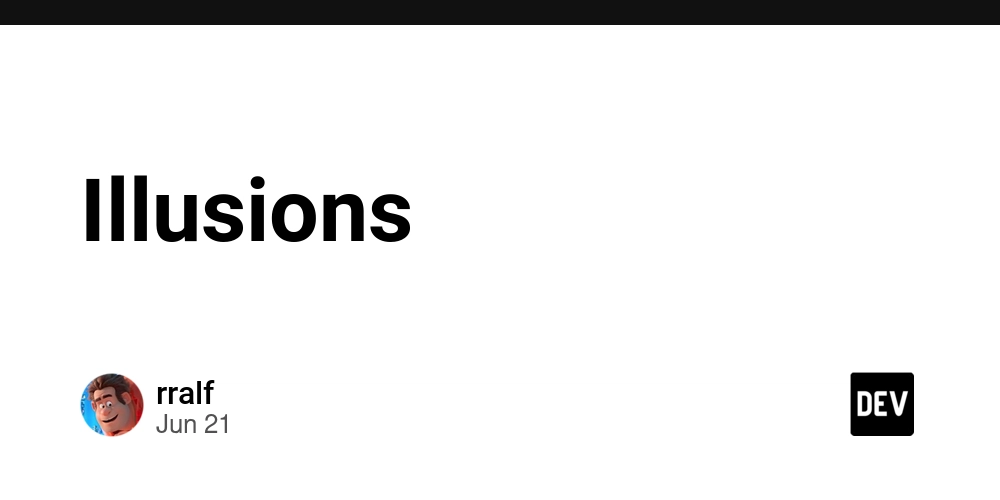Illusions – DEV Community
What Do You Feel When You Open a Blank Page in Notepad, VSCode, Eclipse, etc.?
This is a beautifully reflective and timely question — one that resonates deeply with anyone who’s ever stared into the abyss of a blinking cursor on a blank screen. Let’s explore the emotions, illusions, and realities that come with that moment, especially as we enter the era of AI-assisted development.
The Illusion of Control
Opening a new file in your favorite editor is like standing at the edge of possibility. The blank page is pure potential — what you write, how you structure it, which problems you solve, and the architecture you choose are all up to you. It feels empowering, almost omnipotent. But as you so insightfully put it, this is also an illusion.
Every decision — how to organize code, which frameworks to use, what the CI/CD pipeline will look like—seems to offer control. But as any experienced developer knows, the further you go, the more you realize how many factors are outside your control:
- Requirements shift.
- Edge cases emerge.
- Dependencies break.
- New constraints appear.
- Unknown unknowns become known (sometimes painfully).
Even with 100% test coverage, you’re only certain about the scenarios you’ve imagined. The real world always finds a way to surprise you.
The Reality
Programming is not deterministic. It’s a creative, iterative, and often messy process. The sense of control is comforting, but it’s also fragile. As you said, we live with the illusion of control—hoping that our tests, our architecture, and our processes will be enough.
But the truth is, software is never finished. It’s only ever in a state of “good enough for now.” The blank page is a reminder of both the freedom and the uncertainty inherent in our craft.
Now, with AI tools like PBR (AI Dev Tasks!), Sonnet, and others, the dynamic is shifting. The blank page is no longer just yours to fill; it’s a collaborative canvas. You can offload the tedious parts, accelerate architecture design, and iterate at a speed that was unimaginable a few years ago.
- Requirements Gathering: AI can help formalize and structure requirements, reducing ambiguity.
- Architecture: Generate high-level designs, diagrams, and documentation in minutes.
- Gap Analysis: Instantly compare code and architecture, surfacing inconsistencies.
- Task Decomposition: Break down large problems into manageable increments.
This shortens the feedback loop dramatically. What once took weeks now takes hours.
But there’s a tradeoff. As AI generates more of the code, the risk is that humans lose touch with the codebase. If you don’t review, test, and understand what’s being produced, you lose control. The code becomes alien, and the illusion of control becomes even more dangerous.
- QA Becomes Critical: With AI hallucinations and unpredictable outputs, rigorous testing and code review are more important than ever.
- Continuous Review: Each increment must be checked, not just for correctness, but for maintainability and alignment with the original vision.
- Human Guidance: AI is powerful, but it still needs human direction, intuition, and judgment.
The Future
We’re already living in this new world, even if we haven’t fully realized it. The blank page is no longer a solitary challenge — it’s an invitation to collaborate, to experiment, and to embrace uncertainty with powerful new tools at our side.
In summary:
- The blank page is both exhilarating and daunting.
- The illusion of control is comforting but incomplete.
- AI is transforming how we approach software creation, but it introduces new risks.
- The human role is evolving—from sole creator to orchestrator, reviewer, and guide.
And that’s a beautiful thing.
Sincerely yours,
A fellow architect, coder, and explorer of the blank page.

